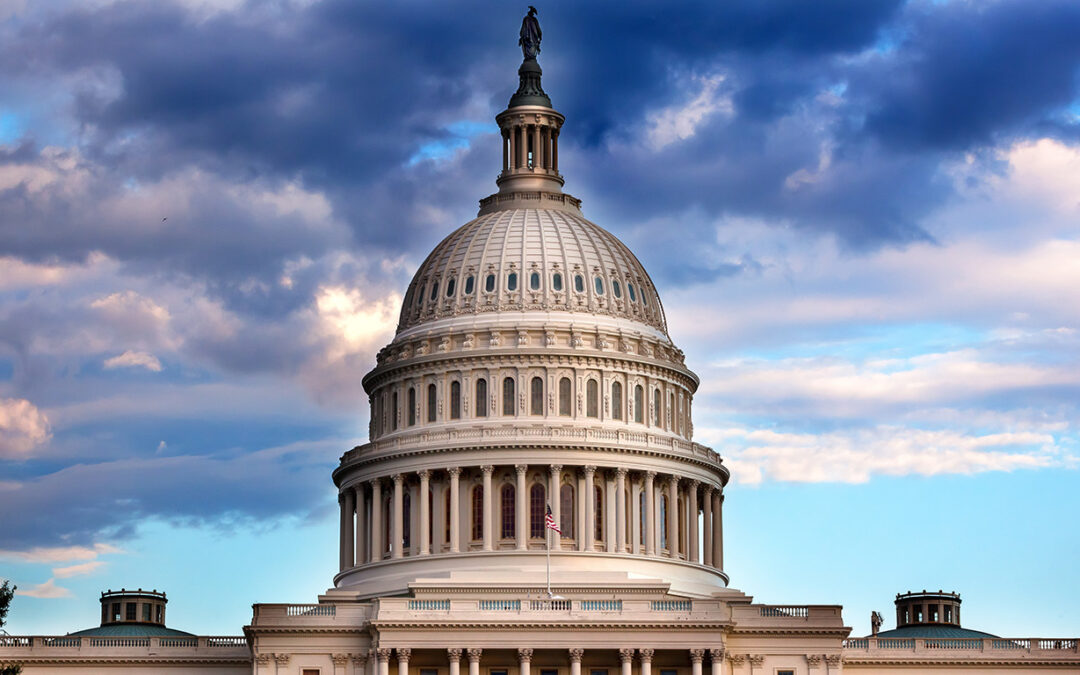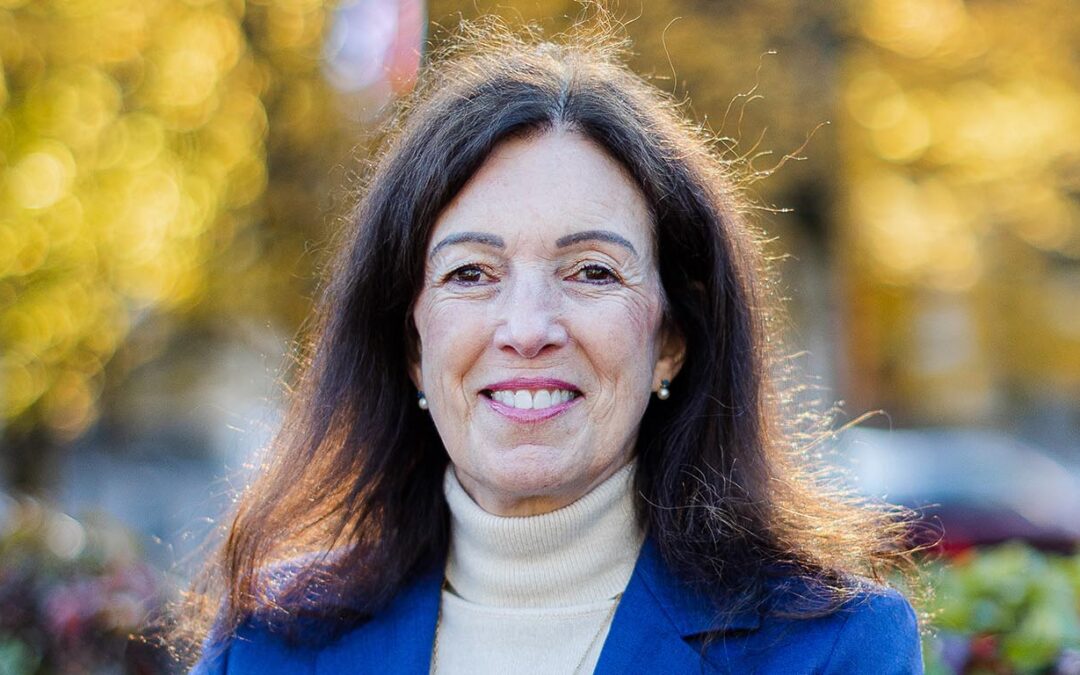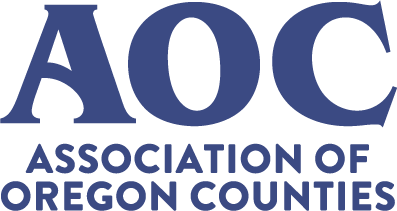
Apr 24, 2023 | Natural Resources
On April 14, the United States Forest Service (USFS) announced the release of $228 million for the Secure Rural Schools (SRS) payments, with $45.6 million coming to Oregon counties. A few days after, the Bureau of Land Management (BLM) announced $25.6 million in payments to Oregon counties under the Secure Rural Schools and Community Self-Determination Act. This means over $70 million will be coming to Oregon to help local governments remain operational.
Counties rely on SRS payments to provide numerous critical services for their communities such as infrastructure, education, conservation projects, search and rescue missions, and wildfire prevention programs. For USFS SRS payment details by county, click here – Oregon is on page 55.
“I want to give a huge thank you to Senators Wyden and Merkley for their continued efforts and sponsorship of the Secure Rural Schools Program,” said Gina Nikkel, AOC executive director. “$70 million coming to Oregon counties to help administer programs and provide essential services to our citizens is greatly appreciated. We cannot say thank you enough for all their continued efforts and the strong partnership we have.”
In the years following the establishment of the USFS in 1905, the national forest system tripled in size across the nation. To compensate counties for potential losses of tax revenues, Congress approved the Act of May 23, 1908. This Act allowed the USFS to distribute a portion of revenues from timber sales, mineral leases, recreation, grazing, and more to the counties containing the national forests and grasslands. In 2000, Congress passed the Secure Rural Schools and Community Self-Determination Act to help stabilize fiscal support for rural county services. In 2021, the Bipartisan Infrastructure Law reauthorized SRS payments through Fiscal Year 2023.
Public land counties rely on programs like SRS and Payments in Lieu of Taxes (PILT) to help maintain their budgets while bearing the responsibility of non taxable federal lands. While these payments represent a fraction of what counties would collect from property taxes and timber receipts, they are critical for local governments to meet their governing missions. The last time authorization for SRS lapsed in Fiscal Year 2016, counties saw an 80 percent decrease in federal forest payments.
Contributed by: Branden Pursinger | Legislative Affairs Manager

Apr 24, 2023 | AOC Business Partner
Recently, Amazon announced an agreement with Umatilla Electric Cooperative (UEC), the electric cooperative that serves Amazon Web Services (AWS) in Umatilla and Morrow counties. This agreement creates an innovative solution that safely and reliably powers data centers in the region and keeps Amazon on a path to achieving 100 percent renewable energy by 2025.
The agreement allows Amazon to take on the responsibility of selecting the energy supply that powers its data center operations, including from renewable energy resources. UEC continues to be an essential partner and provider of reliable utility service to AWS data centers in UEC’s service territory. Amazon’s energy supply from its utilities, combined with its renewable energy procurement across the United States, has enabled several AWS data center regions — including its U.S. West (Ore.) Region—to be powered with at least 95 percent renewable energy.
“We’re proud of our work in Oregon, and this new agreement with Umatilla Electric Cooperative is the latest example of how we’re working closely with the community. In addition to AWS investing over $15 billion in the state economy since 2011, and recycling up to 96 percent of AWS cooling water to provide millions of gallons of water to local farmers each year, we’re now able to directly invest in renewable energy across the Pacific Northwest to help power AWS operations in Oregon. We’re grateful for the collaboration with UEC, which will help us stay on a path to meeting 100 percent renewable energy by 2025,” said Charley Daitch, director of Energy and Water at AWS.
Historically, utilities have been responsible for sourcing an energy supply for their customers. To enable a faster transition to renewable energy, Amazon has been innovating by working with utilities to directly bring new wind and solar projects onto the grid.
Amazon has been the world’s largest corporate buyer of renewable energy every year since 2020 — sending a demand signal that also helps to further increase supply. Amazon is committed to reaching net-zero carbon by 2040 and is on a path to powering its operations with 100 percent renewable energy by 2025. As of today, Amazon has already reached more than 85 percent renewable energy globally across its offices, fulfillment centers, stores, and AWS data centers.
Contributed by: Amazon Staff
*Sponsored content provided by AOC Business Partner.

Apr 24, 2023 | Federal News
In March, Senator Ron Wyden (D-Ore.) hosted a webinar series with relevant government agencies to help Oregonians and small businesses access the benefits in the Inflation Reduction Act and Bipartisan Infrastructure Law. Here are links to those recorded webinar sessions by agency, as well as some helpful guides.
Contributed by Tim Leahy | Office of Senator Ron Wyden

Apr 3, 2023 | Transportation
The Oregon Department of Transportation (ODOT) released the draft Oregon Transportation Plan (OTP) for public review and comment.
Tell ODOT what you think!
You are invited to review the draft OTP and provide comments now through May 12.
Why should you review and provide comments? Because this 25-year plan guides important transportation-related decisions that impact people like you and communities like yours every day. Your comments will let ODOT and the Oregon Transportation Commission know what you value in a transportation system – now and into the future.
Learn about the plan, how to provide comments, and get your questions answered at a live webinar on Tuesday, April 11 at noon. If you cannot make it to the live event, the recorded webinar will be posted on the project webpage following the meeting.
Ways to Comment
Visit the project webpage for more information.
About the Plan
The OTP sets the long-range transportation policy for Oregon transportation system. It informs investment decisions by ODOT and regional and local governments for all the ways we get around, including walking, rolling, biking, and taking public transit like buses and streetcars. Planning for a better transportation future is a complex challenge that takes collaboration, compromise, and creativity across the entire state and in our local communities.
Your participation is important! Your feedback will help finalize a plan that gives ODOT the opportunity to develop a more sustainable and equitable transportation system for all Oregonians.
Why is the plan being updated?
The OTP was last updated in 2006 and much has changed. Updating the OTP will help us develop a resilient plan that can adapt to drivers of change such as climate change, social equity, our growing population over age 65, and new technologies.
Contact
Questions and comments can be submitted at any time to the project team at:
Phone: 503-423-3720
Email: OTP@odot.state.or.us
Website: tinyurl.com/OTP-update
More information is available here.
Contributed by: Oregon Department of Transportation Project Team

Mar 24, 2023 | AOC News
AOC, your membership organization, has been hard at work this last quarter. We’ve been able to navigate some complex policy discussions; build and strengthen partnerships; and officially opened the doors to our new building to celebrate this achievement at our March open house.
While not a full review of our activities, below are some highlights for us as an organization this last quarter.
Legislative Session – Policy
Members and staff have been actively testifying and lobbying legislators on critical issues facing our counties. While we are nearing the end of the first chamber deadlines this session, we have already seen the bill list narrow – as a reminder, long sessions see anywhere from 3,000 – 4,000 bills introduced.
March 17 was the first deadline. By this date, bills that had not been posted for a work session are presumed dead. April 4, is the next deadline. Bills that have not been moved out of a policy committee in their chamber of origin to either the other chamber, or a joint committee will be added to that list, further narrowing bills of focus for the Legislature.
The AOC legislative affairs team has put together the initial list of high-level bills they are tracking, calling out which survived the first deadline and which did not. Click here to view this list.
As a reminder, while we are working hard to move AOC supported bills, it’s not as simple as a bill dying at the deadline. Some policy issues do resurface through “gut and stuffs”, amendments, the budget, new bill introductions, or may be further explored in work groups.
Sine die is the official call of what makes it and what does not, but deadlines help narrow the scope of focus on legislation.
Legislative Session – Budget
In addition to policy discussions, the Legislature is diving deeply into creation of the state’s 2023-25 budget.
Over the next few weeks, the Joint Committee on Ways and Means will be conducting its biennial “road show,” where they will take their budget framework, released March 23, by the powerful budget committee co chairs, and seek feedback from Oregonians.
The committee will visit the following four cities for public input:
- Portland (April 8);
- Newport (April 14);
- Roseburg (April 21); and
- Ontario (April 28).
More information is available here.
AOC would encourage our members to connect with legislators on the committee and provide testimony on key funding for county programs.
If you have any questions please feel free to contact me or any member of our legislative affairs team.
Open House
On March 13, AOC officially opened its doors to members, partners, and stakeholders to celebrate our new building. Our building, purchased in November of 2021, is now equipped with furniture, audio visual equipment, and is well organized to support the needs of our organization, day-to-day operations, members, and any events we may host at the building.
I was delighted to see so many members and partners drop by to see our new space and network.
Partnerships
I am pleased to say AOC is building strong relationships with the governor’s office, her staff, and agency partners. I am meeting with the governor’s office to build relationships and elevate our membership needs. Staff on your legislative affairs team are regularly meeting with the governor’s staff and agency staff to advocate for our issues. This is important work, and a high priority for AOC as a new administration means new staff, new direction, and new opportunities for collaboration.
Looking Forward
We look forward to closing out the legislative session with some wins for our members.
If you have any questions, please feel free to reach out.
Gina Firman Nikkel, Ph.D.
AOC Executive Director





